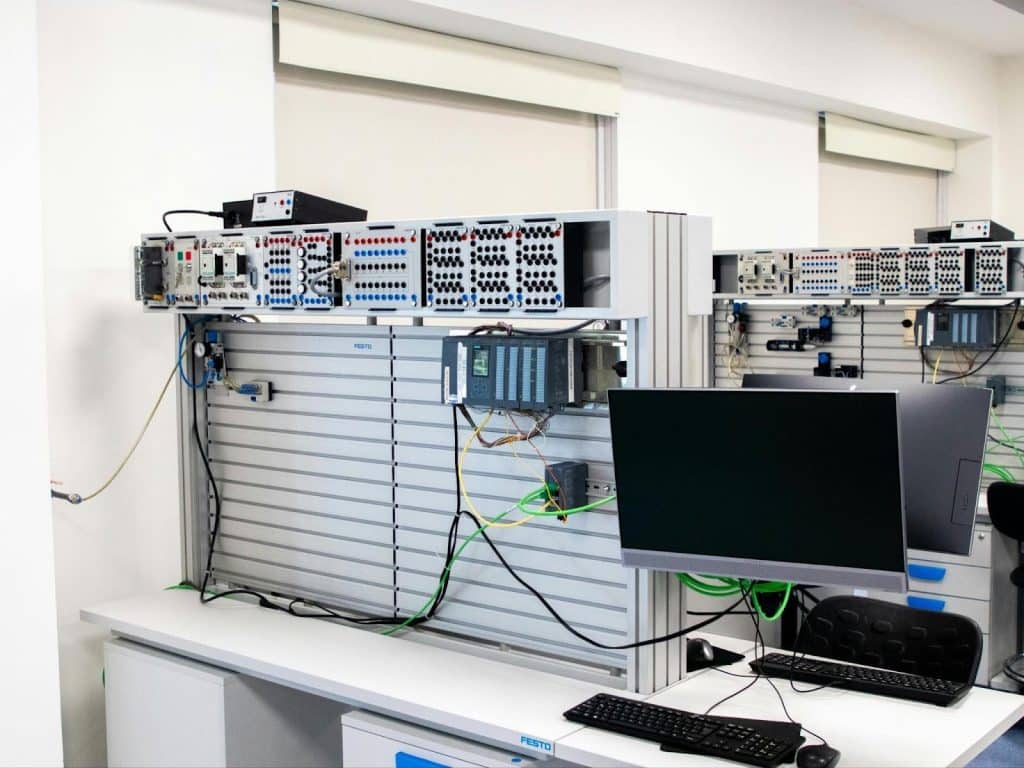Every business setup needs a network that doesn’t get in the way. Maybe you’re in one shared room, or maybe your team is spread across a larger space. Either way, the right setup keeps everything connected without extra hassle.
Two key parts to that setup? Switches and routers, but they don’t do the same job. One moves traffic inside your network, the other connects you to the outside. It’s better to understand how they differ early—before your setup starts causing problems or slowing things down.
What’s a Network Switch?
Let’s keep it simple. A switch connects stuff inside your network—your computers, printers, servers, all that. It keeps things organized, so devices don’t clash or slow each other down.
Here’s how it works: most switches operate on Layer 2. That means they look at MAC addresses (the unique codes each device has) and figure out where to send data within your local network. You send a file to the office printer? The switch gets it there. No fuss.
Some switches are smarter. Layer 3 ones can handle a bit more—like routing traffic between different sections of your network. Think of them as switch-router hybrids, but without trying to do everything.
Now, not all switches are built the same. You’ve got:
- Unmanaged switches – just plug them in, and they do their job. No setup. Super handy for small teams or anyone who hates tech headaches.
- Managed switches – these give you more control. You can set traffic priorities, segment your network, and handle multiple VLANs if you need to.
- PoE switches – they’re especially helpful if you’re using IP cameras or phones. One cable handles both data and power. Clean setup, fewer wires.
And hey, not every workspace is built for loud, buzzing tech. If you need something quiet and compact, maybe in a back-office or small conference room, a fanless switch model like the Juniper EX2300-C-12P is what to look for. It keeps things cool and quiet without making a scene.
What’s a Router?
A router is your connection to the outside world. It figures out how your internal network reaches the internet and how that traffic gets routed back.
Routers deal with IP addresses and handle traffic at Layer 3. Open a browser or hop on a Zoom call—that traffic has to find its way out and back in. That’s the router’s job. Simple as that.
But that’s just the start. Routers also pull in features like firewalls to filter sketchy traffic. And NAT helps when you’ve got a bunch of devices all using the same connection. DHCP to assign IP addresses on the fly. VPN support for remote work. And sometimes, load balancing, which keeps things running even if one internet line goes down.
You’ll find routers of all kinds. If you’ve got a growing team or rely on several systems at once, a regular router might not cut it. You’ll want an enterprise-level router like the Juniper MX304, which is designed to keep up with high-performance demands without slowing everything down.
Switch vs. Router: What’s the Real Difference?
A switch keeps your internal devices connected.
A router gets your network online.
Switches use MAC addresses, routers use IPs. Switches talk inside the network, routers talk outside it. And when it comes to security, routers usually offer more protection, while switches keep things moving fast within the office.
The thing is, they’re not either-or devices. Most business setups need both.
When to Use Which (or Both)
Running a tiny team with basic needs? A simple router and unmanaged switch might cover it.
Powering up phones, cameras, or conference room displays? PoE switches make wiring easier.
Managing multiple departments or handling sensitive client data? A managed switch lets you segment the network. Add a router that supports VPN and you’re good to go.
And once your headcount grows—or you go hybrid—you’ll want gear that scales. That means reliable routers and flexible switches working in sync.
Choosing the Right Setup for Your Business
Start simple. How many people are on your network? What’s your internet like? Teams that stick to email and online tools don’t need much—just a simple router and switch to keep things steady.
But if you’re moving big files or jumping on video calls all day, that kind of setup might choke. That’s when faster gigabit ports and a router really help.
Got remote staff or teams working from different locations? Check whether your router allows VPN connections. A switch with VLAN support can also make it easier to split traffic without extra hardware.
Security matters too. A router with a good firewall, a switch that lets you split your network into zones—that stuff keeps you safe and in control.
And plan ahead. Maybe you’ve got ten employees today, but you’re planning to hire five more soon. Buy gear that won’t bottleneck you six months from now.
Small teams can start with basic, no-fuss hardware. Mid-size setups do better with managed switches and routers that support customization. Bigger teams? You’ll want redundancy, remote management, and room to grow.
Conclusion
Switches and routers aren’t competing—they’re teammates. One handles the inside. The other handles the outside. Before buying gear, think about how your team actually works. Are you on video calls all day? Sharing files? Running cloud apps that can’t lag?
A setup that matches your workload will save you time and stress. Nail that, and your connection won’t slow you down—or cross your mind.
